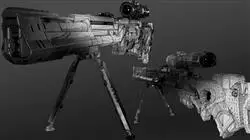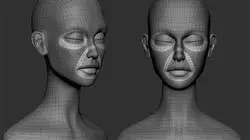University certificate
The world's largest faculty of video games”
Introduction to the Program
Learn how to program the best video games in the world thanks to this Professional master’s degree”

The video game industry has experienced a great expansion in recent years. Given the popularity of this form of entertainment, companies in the field have been forced to design and publish games more frequently. The need for more creativity has also grown, as gamers are increasingly demanding more varied titles in different genres that offer new experiences.
For this reason, the field is demanding Video Game Programming specialists to take on the fundamental task of creating the code for their new works. This work is delicate and requires a high level of specialization, so it is advisable to have undertaken a deep and optimal learning process to become a true expert.
This Professional master’s degree in Video Game Programming is what professionals need to enter development departments in large companies in the industry. Throughout the program, students will learn the basics of programming and software engineering, data structure and algorithms, object-oriented programming and other more specific issues such as game engines or real-time programming.
In this way, students are guaranteed to get the best knowledge so they can apply it directly in their areas of work.
The best companies in the industry will want to count on you”
This Professional master’s degree in Video Game Programming contains the most complete and up-to-date program on the market. The most important features include:
- Practical cases presented by experts in video game programming and development
- The graphic, schematic, and practical contents with which they are created, provide scientific and practical information on the disciplines that are essential for professional practice
- Practical exercises where self-assessment can be used to improve learning
- Its special emphasis on innovative methodologies
- Theoretical lessons, questions to the expert, debate forums on controversial topics, and individual reflection assignments
- Content that is accessible from any fixed or portable device with an Internet connection
You want to develop the best video games in the world and this program teaches you how to do it”
The program’s teaching staff includes professionals from sector who contribute their work experience to this training program, as well as renowned specialists from leading societies and prestigious universities.
The multimedia content, developed with the latest educational technology, will provide the professional with situated and contextual learning, i.e., a simulated environment that will provide immersive specialization programmed to learn in real situations.
This program is designed around Problem-Based Learning, whereby the professional must try to solve the different professional practice situations that arise throughout the program. For this purpose, the student will be assisted by an innovative interactive video system created by renowned and experienced experts.
Program the video games of your dreams thanks to this Professional master’s degree"

Don't wait any longer: Program video games as do the best experts"
Why study at TECH?
TECH is the world’s largest online university. With an impressive catalog of more than 14,000 university programs available in 11 languages, it is positioned as a leader in employability, with a 99% job placement rate. In addition, it relies on an enormous faculty of more than 6,000 professors of the highest international renown.

Study at the world's largest online university and guarantee your professional success. The future starts at TECH”
The world’s best online university according to FORBES
The prestigious Forbes magazine, specialized in business and finance, has highlighted TECH as “the world's best online university” This is what they have recently stated in an article in their digital edition in which they echo the success story of this institution, “thanks to the academic offer it provides, the selection of its teaching staff, and an innovative learning method aimed at educating the professionals of the future”
A revolutionary study method, a cutting-edge faculty and a practical focus: the key to TECH's success.
The most complete study plans on the university scene
TECH offers the most complete study plans on the university scene, with syllabuses that cover fundamental concepts and, at the same time, the main scientific advances in their specific scientific areas. In addition, these programs are continuously being updated to guarantee students the academic vanguard and the most in-demand professional skills. In this way, the university's qualifications provide its graduates with a significant advantage to propel their careers to success.
TECH offers the most comprehensive and intensive study plans on the current university scene.
A world-class teaching staff
TECH's teaching staff is made up of more than 6,000 professors with the highest international recognition. Professors, researchers and top executives of multinational companies, including Isaiah Covington, performance coach of the Boston Celtics; Magda Romanska, principal investigator at Harvard MetaLAB; Ignacio Wistumba, chairman of the department of translational molecular pathology at MD Anderson Cancer Center; and D.W. Pine, creative director of TIME magazine, among others.
Internationally renowned experts, specialized in different branches of Health, Technology, Communication and Business, form part of the TECH faculty.
A unique learning method
TECH is the first university to use Relearning in all its programs. It is the best online learning methodology, accredited with international teaching quality certifications, provided by prestigious educational agencies. In addition, this disruptive educational model is complemented with the “Case Method”, thereby setting up a unique online teaching strategy. Innovative teaching resources are also implemented, including detailed videos, infographics and interactive summaries.
TECH combines Relearning and the Case Method in all its university programs to guarantee excellent theoretical and practical learning, studying whenever and wherever you want.
The world's largest online university
TECH is the world’s largest online university. We are the largest educational institution, with the best and widest online educational catalog, one hundred percent online and covering the vast majority of areas of knowledge. We offer a large selection of our own degrees and accredited online undergraduate and postgraduate degrees. In total, more than 14,000 university degrees, in eleven different languages, make us the largest educational largest in the world.
TECH has the world's most extensive catalog of academic and official programs, available in more than 11 languages.
Google Premier Partner
The American technology giant has awarded TECH the Google Google Premier Partner badge. This award, which is only available to 3% of the world's companies, highlights the efficient, flexible and tailored experience that this university provides to students. The recognition as a Google Premier Partner not only accredits the maximum rigor, performance and investment in TECH's digital infrastructures, but also places this university as one of the world's leading technology companies.
Google has positioned TECH in the top 3% of the world's most important technology companies by awarding it its Google Premier Partner badge.
The official online university of the NBA
TECH is the official online university of the NBA. Thanks to our agreement with the biggest league in basketball, we offer our students exclusive university programs, as well as a wide variety of educational resources focused on the business of the league and other areas of the sports industry. Each program is made up of a uniquely designed syllabus and features exceptional guest hosts: professionals with a distinguished sports background who will offer their expertise on the most relevant topics.
TECH has been selected by the NBA, the world's top basketball league, as its official online university.
The top-rated university by its students
Students have positioned TECH as the world's top-rated university on the main review websites, with a highest rating of 4.9 out of 5, obtained from more than 1,000 reviews. These results consolidate TECH as the benchmark university institution at an international level, reflecting the excellence and positive impact of its educational model.” reflecting the excellence and positive impact of its educational model.”
TECH is the world’s top-rated university by its students.
Leaders in employability
TECH has managed to become the leading university in employability. 99% of its students obtain jobs in the academic field they have studied, within one year of completing any of the university's programs. A similar number achieve immediate career enhancement. All this thanks to a study methodology that bases its effectiveness on the acquisition of practical skills, which are absolutely necessary for professional development.
99% of TECH graduates find a job within a year of completing their studies.
Professional Master's Degree in Video Game Programming
.
The video game industry has had an accelerated expansion in recent years and, with its popularization, companies have seen a great opportunity in the creation of new designs and frequent realization of releases. One of the central axes in the development of video games is programming, which is the creation of codes that allow the execution of their general operation. Without the formulation of these codes, the visuals, story and gameplay would not stand out as they do today. This is why at TECH we decided to formulate a Professional Master's Degree in Video Game Programming that will allow people who decide to start this great path to learn about software engineering, data structure and algorithms, object-oriented programming, among other things.
Learn with the best online methodology
.
This degree has a fully online methodology, which allows the student to organize their study hours as it suits them best, and can meet all their commitments; you only need an electronic device with internet access and access at any time of the day. The program has a series of 10 complete modules ranging from the basics of programming to the design and realization of video games and multiplayer systems. All this with the help of the development of case studies, graphic, schematic and audiovisual contents elaborated from the knowledge of great professionals who have worked in the industry and have been recognized for it. In this way, students are guaranteed to obtain the best knowledge in the subject and be applied effectively in the working world.
?







